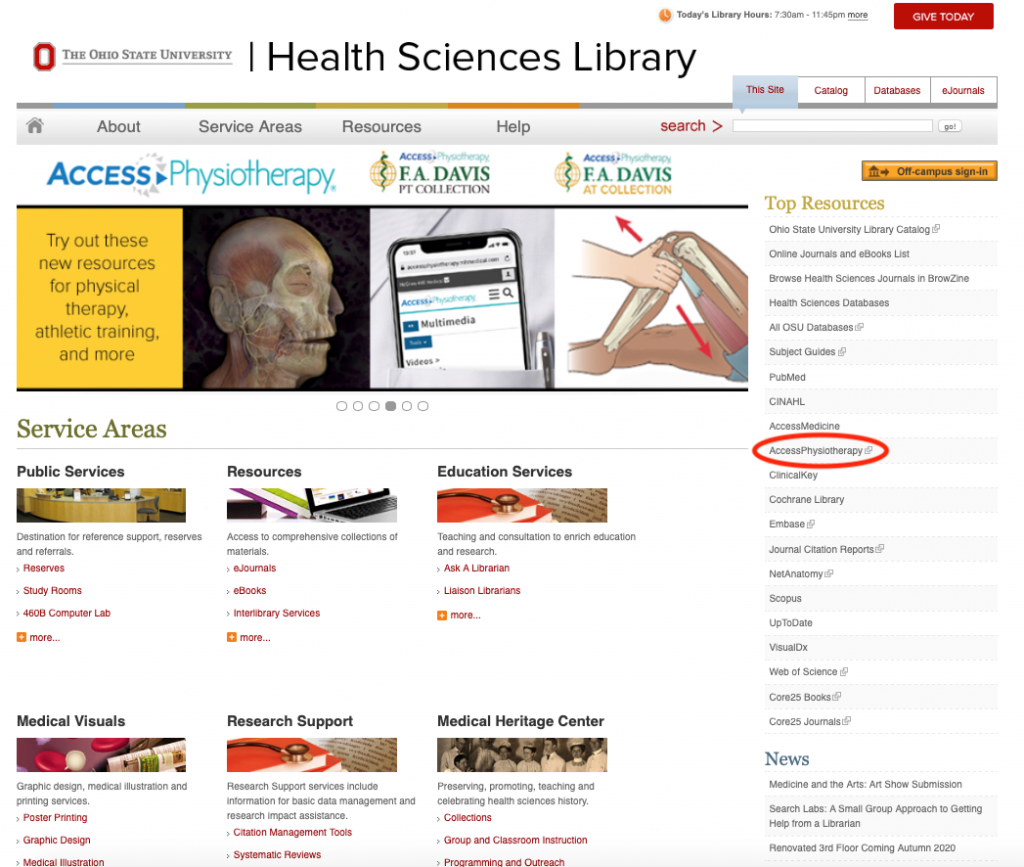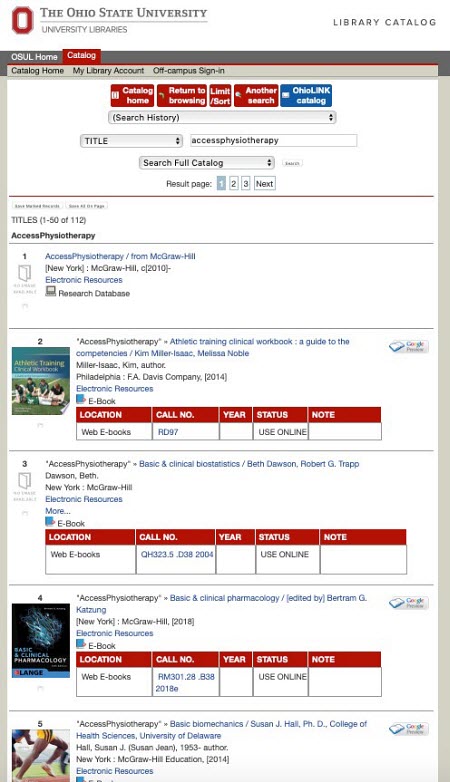
No Comments on Successful Strategies for Collaborating with a Department to Fund and Promote a New Resource 497
Joseph Payne, MLIS
Collection Development Librarian
Health Sciences Library
The Ohio State University
As many collections budgets continue to remain flat or decrease, it is often difficult for libraries to provide new resources that faculty and students are requesting. Serving more than 28,000 faculty, staff, and students with very diverse and sometimes conflicting needs means that we cannot possibly buy all that they desire. Especially when buying something targeted to one or two particular programs, we often propose partnering with the requester to help fund the subscription for a few years to assess usage and impact. Here, I describe how one such collaboration was established.
The McGraw-Hill AccessPhysiotherapy database and F.A. Davis physical therapy and athletic training ebook collections have been on the collective wish list of the Health Sciences Library (HSL) and the School of Health and Rehabilitation Sciences (SHRS) faculty at The Ohio State University for several years.
In 2019, I joined our McGraw-Hill sales representative at a SHRS faculty meeting to provide a product demonstration and begin discussion on how we could partner to bring this product to campus.
Following this meeting, a campus-wide trial was made available and these steps were taken:
- The library began promoting it through the HSL website. To increase visibility, these resources were featured prominently on the HSL homepage through a banner image and inclusion in the top resources list.
- Off-campus access was made available as soon as possible to remove barriers to access during the trial.
- Once these links were available, access instructions were forwarded to SHRS faculty and they began to promote the trial to their faculty, staff, and students.
Screenshot of HSL home page (https://hsl.osu.edu):

After a successful trial, the HSL and SHRS leadership signed a memorandum of understanding outlining the split expense breakdown for a three-year pilot period. With the expense agreement in place, additional steps were taken to boost access:
- Records for all books in these collections were individually added to the OSU online catalog.
- AccessPhysiotherapy was added as an alternate title in all of these records to make finding and linking to the books easy for faculty and students. One catalog search provides 113 results: one record for the database itself and a list of 112 individual book titles.
- Included in each book record is a persistent link that can be used in a course syllabus or learning management system.
- Simple instructions for finding and using these links were sent to SHRS leadership and forwarded on to faculty members encouraging their use.
- In addition to the textbooks available in these packages, an interactive anatomy tool, Anatomy and Physiology Revealed, is also included in our subscription. We have begun promoting this to a wider group of students through our anatomy subject guide and have plans to do more promotions of this and other anatomy resources available through the HSL.
Screenshot of OSU Library Catalog showing search results for title AccessPhysiotherapy (https://library.ohio-state.edu):

A review of the usage statistics for the first six months of the pilot found:
- 100% of the books in AccessPhysiotherapy, 79% of the books in the F.A. Davis Athletic Training Collection, and 78% of the books in the F.A. Davis Physical Therapy Collection were used at least once.
- 51% of the available books in all three resources had at least 10 uses, 15% had more than 100 uses, and 5% had over 500 uses. Overall, package content was accessed over 16,000 times and nearly 3,000 searches were performed.
This level of usage confirms that promotional efforts have been successful in reaching students and faculty and will serve as a baseline to measure success across the remainder of the pilot. Overall usage figures and data by book title will be shared with SHRS faculty on a yearly basis during the pilot.
Collaborations like this one provide a valuable opportunity to stretch the collections budget and provide access to valuable resources. They also provide an opportunity for conversations about cost and value of library resources that are fully funded. Ongoing promotions along with usage reviews and periodic training for new departmental faculty are important in these collaborations. The HSL and SHRS faculty have supported each other in this endeavor. By sharing the cost of the subscription, both the library and the department have a vested interest in making these shared purchases a success.


Leave a comment